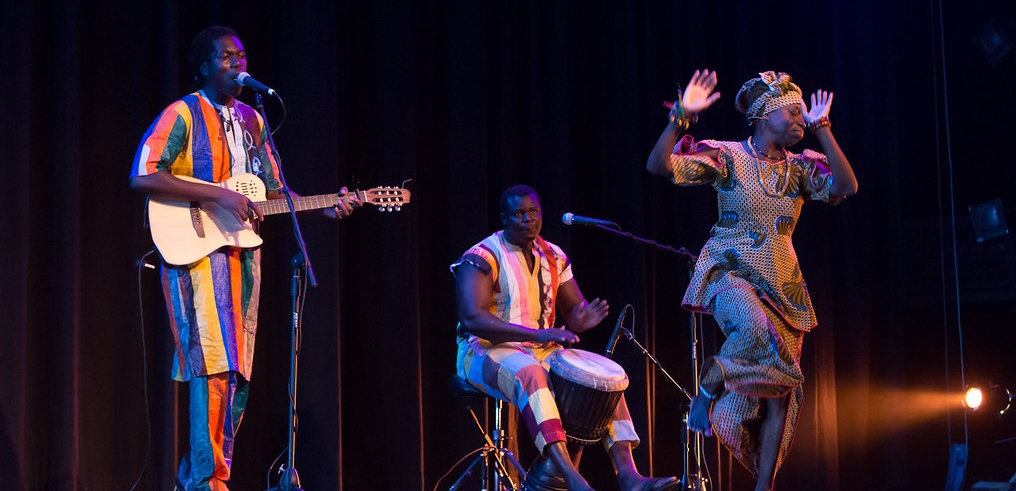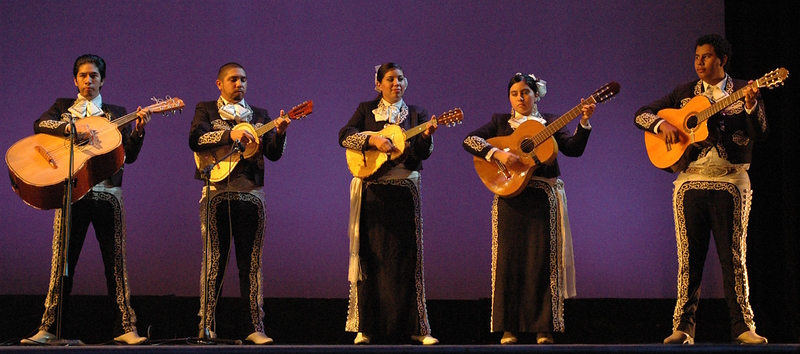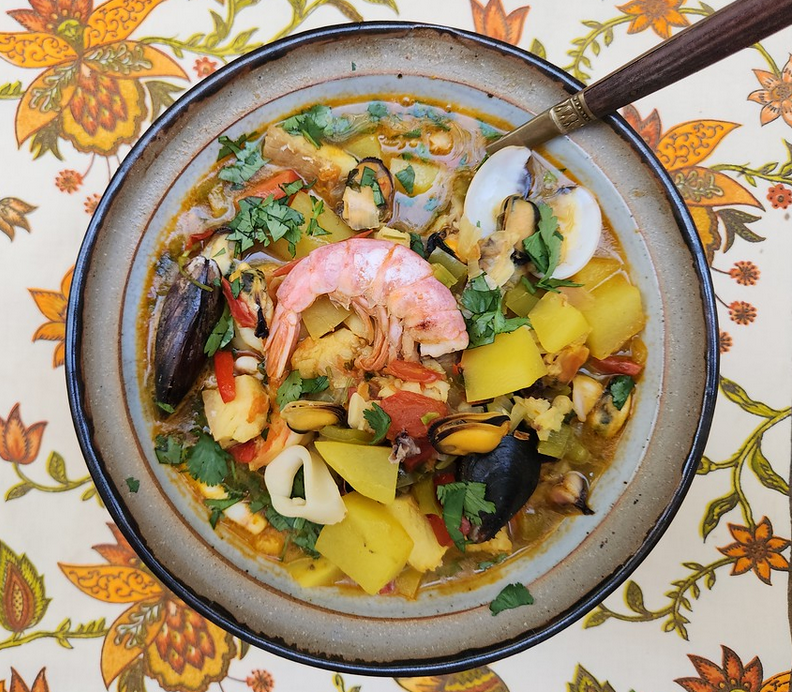
Balboa Theatre:
Built in 1924, the historic Balboa Theatre was an elegant vaudeville and movie palace in the heart of downtown San Diego. At the time it was a state-of-the-art building that included six storefronts along Fourth Avenue, with 34 offices on the floors above.
The Balboa Theatre has been closed for over twenty years. After numerous efforts to privately renovate and reopen the Theatre, the commitment was made in 2002 to retain the historic Balboa Theatre as a public asset with the City's Redevelopment Agency funding its renovation and restoration and reopening the Theatre as a community performing arts center to be managed and operated by San Diego Theatres.
Upcoming events include Brazilian guitar, Russian ballet, and Chinese circus acts.
San Diego Civic Theatre:
The 2,967 seat San Diego Civic Theatre is the region's largest and greatest attended performing arts venue. The Civic Theatre is owned by the City of San Diego and is managed and operated by San Diego Theatres on behalf of the community.
Opened in January 1965, the Civic Theatre has hosted the world's finest talents in the fields of opera, classical music, dance, comedians, contemporary music, and Broadway. Additionally, it has served as a community gathering place for inaugurations, governmental addresses, religious services, political activities, lectures, educational presentations, and corporate meetings.
Upcoming events include opera and ballet.
For shows and tickets at either venue, see:
SDcivic.org
- Details
- Hits: 3904
Internationally popular, Taiko drumming is a relatively new performance tradition that employs traditional Japanese instruments in new and dramatic ways. Jazz drummer Daihachi Oguchi is credited with creating Kumi-daiko style of Taiko in 1951. The sound is exuberantly loud with complex rhythms and dramatic choreographed moves by performers which meld music with angular and precision movement (amplified in effect by black headbands), evoking a martial arts esthetic. |
Taiko: an emergent tradition
Taiko is used to describe the music made with Japanese drums known as Taiko. In Japanese, the word Taiko is used to describe any sort of percussion instrument that is most precisely "wide", because Taiko literally translates into "wide or fat drum". What most people in America refer to as Taiko is actually a relatively new art form known as Kumi-daiko, which is a performance consisting of multiple Taiko drums.
The use of Taiko drums in Japan dates back further than 1,400 years and its origins are most likely rooted in Chinese and Korean traditions. The exact history of Taiko drumming in Japan is unknown, but the oldest evidence of Taiko in Japan is a clay figure, dating back to the 6th or 7th century, that is shown beating a Taiko drum.
Taiko was originally used for various reasons. From the Heian era until the 14th century, Taiko was used on battlefields to intimidate enemies, as well as to give commands, motivate, and coordinate soldiers by setting a marching pace. It was also used off the battlefield; in the Edo period, Taiko drums were used for signals such as hunters beginning their hunt, fire alarms, sumo announcements, and storm warnings. Japanese people also felt that the drum had spiritual powers, calling the Taiko sound the voice of Buddha and using the drums to call to the gods during harvest time.
As Buddhism and Shinto beliefs became more prevalent, only holy men were allowed to play the Taiko drums for ceremonious reasons and occasions, and practices like these still continue today. In Japanese history, Taiko drums were played singularly and only with permission of priests. Indeed even in artistic uses of the Taiko, as in accompanying Japanese theater arts like Noh or Kabuki, the Taiko drum was played singularly. The modern group Taiko ensembles, which many people associate Taiko with today, is known as Kumi-daiko and came later in history.
Daihachi Oguchi is credited with creating the Kumi-daiko style of Taiko in 1951 post-WWII Japan. Having a background in Jazz music, Oguchi found a traditional Taiko composition and decided to rearrange it, breaking away from many Taiko traditions by using multiple Taiko drums that had different sounds and multiple, simple rhythms, and were played by non-professional musicians. The new composition was played for the Osuwa Shrine, and Oguchi's style of Taiko quickly became popular in Japan and then around the world. This style of Taiko is still very popular today and Westerners typically associate it with the sounds and performances of Taiko drumming.
Taiko Instruments

Taiko are considered sacred instruments that are created from the earth. Daiko is the word for taiko drums when used in a compound word. There are two types of taiko drums that have many varieties: byou-daiko (drums are carved from a single log, with heads stretched and tacked to the body, and thus cannot be tuned) and shime-daiko (drums with two heads that are sewn over steel rings and laced to the body with a rope or cord. A second rope is wound around the laces of the head ropes, and the drum can be tuned by adjusting the second rope.) In taiko groups, the shime is often used to keep the basic rhythm and establish time, but it can be a solo instrument as well.
Bachi - As a general rule, taiko drums are struck with sticks called bachi. Bachi come in many shapes and sizes and are made from many different types of material.
Types of Byou-daiko:
Nagado-daiko - This is the most common taiko drum used in Kumi-daiko. They are often called Miya-daiko. They have a characteristically deep and reverberating sound. These drums come in different sizes: ko-daiko (roughly 1 to 1.5 feet in diameter), chu-daiko (roughly 1.6 to 2.8 feet in diameter), and odaiko (from 2.9 to 6 feet or more in diameter).
Odaiko - The biggest of the Nagado-daiko, these drums are played horizontally on stands, often by two people at once. Odaiko can sometimes reach huge proportions and weigh over 3 tons, although these drums are used more for temples than for Kumi-daiko.
Hira-daiko - It tends to be a small drum but can reach odaiko proportions. It is popular for taiko groups to buy a very large sized hira-daiko for less than a nagado-daiko drum of the same size. They have a deep sound much like the nagado-daiko, but because of the slimmer body, the sound diminishes much faster.
Types of Shime-daiko:
Wadaiko - These drums are used for classical Japanese music. They have relatively lightweight bodies and thin heads, often with thin patches of deer skin in the middle of the heads.
Tsukeshime-daiko - These drums are used for folk music and Kumi-daiko. They are much heavier and thicker type of wadaiko, and can be tuned to a very high pitch.
Oke-daiko - They are carved from multiple pieces that are fit together. Also, they are larger than nagado-daiko - often 6 feet long with a 3 foot diameter. Like odaiko, oke-daiko are played horizontally on a stand. Short-bodied styles of oke-daiko are becoming popular. They are usually played using slat-like bamboo bachi causing the drum to produce a loud, flat sound.
By Ian Williams
Photos by Berwyn Husmann
Group Pictured: Naruwan Taiko
- Details
- Hits: 4030

The Dornob Collective
Persian music is a generally non-rhythmic music with each instrument using a single melodic line known as monophony. Both instruments and a singer are used to create the traditional sound of Persian/Iranian music. The tempo is usually fast and the ornamentation of instruments is dense. The vocals of the singer usually have a yodel-like quality known as Tahrir.
The history of Persian music is somewhat mysterious because notation in Persia was not used with significant regularity until the 1930s. Most information about early Persian music is found in documentation from artists, historians, and philosophers. According to these sources Jamshid, an Achemenid King, is credited with creating Persian music around the 6th to the 4th century B.C.E. The music was used in courts and for religious rituals. During the Sassanian Dynasty, between the 3rd and the 7th century C.E., musicians were given exalted status because of their connection with the courts' activities. During this period Barbod, a famous court musician, created a musical system known as Dastgah, which Iran's modern musicians still use in their compositions.
Barbod’s system consisted of seven royal modes, 30 derivative modes, and 360 melodies. The new system created 12 dastgahs, each with a designated eight-note scale, and 365 melodies (gushes), which are only four or five notes long and create a foundation on which the musician can make changes or improvise. Each melody flows effortlessly to the next with the use of transition fragments called foruds. Finally, the combination of all pieces that make up the repertory of Persian music is called the radif (row). Thus, the radif of Persian music contains the 12 dastgahs with all of their constituent gushehs. An accomplished musician knows all the 12 dastgahs and corresponding gushes and foruds. The musician has the ability to improvise them, changing the rhythm and melody just enough to sound different while not changing the original melody.
After the Sassanian Dynasty came the Iranian Period, from the 7th to the 15th century, which suppressed music and any musical activities. After this suppression came the renaissance of culture in Persia, between the 16th and the 18th century, when the Safavid Dynasty came into power, but even though the Persian culture was flourishing, music was being suppressed during this time due to the Shia Islam outlook on music as a corrupting, frivolous activity. When the Qajar Dynasty was in power from 1785 to 1925, great improvements were made to Persian music, including the establishment of the dastgah system, which is used today in Iranian music. In 1935 Persia's country name was officially changed to Iran. During the Pahlavsi Dynasty from 1925 until 1979, music in Iran was restored as an important part of Iranian culture and one to be held in esteem. Since then, traditional Persian music has attracted a lot of attention and interest.
In modern Iran, traditional Persian music is rooted in religion and played in many different types of ceremonies. Traditional Persian music has connections with Sufism, a sect of Islam, and is considered a way of having a religious connection with the divine spirit. Sufis believe that their music invokes the word of God. Western pop has also influenced the music of Iran and is played anywhere that music is enjoyed.
Persian Instruments:
Tar - A stringed lute instrument that has two octaves. Five of the strings are steel and one is brass. It is plucked to produce sound and is tuned according to what Dastgah is being played.
Setar - A stringed lute that has the same two octave range as a Tar, but with only four strings.
Kamancheh - A bowed spike fiddle that has four metal strings. It is played much like a violincello but sounds much like a violin. It is tuned differently depending where in the country it is being played.
Santoor - A dulcimer instrument that is played with two delicate wooden mallets, with a range of three octaves. It has 72 strings that are arranged in sets of four, and each string within the sets are tuned to the same pitch.
Barbat - A plucked string instrument with nine to eleven strings.
Tanbour - A plucked string instrument with a pear-shaped body and three strings.
Ney - A wind instrument similar to the flute with six finger holes.
Tombak (or Zarb)—A one-headed drum that is carved from a single piece of wood. Its circumference is smaller on the bottom and is open, while the top is larger and has a sheepskin membrane stretched across it.
Daf - A frame drum covered in goat skin
Dayereh - A tambourine.
Western instruments such as the violin, piano, accordion, violincello, clarinet, and trumpet are also used in modern Persian music. A "singer" is also usually present and reciting Sufi poetry which sometimes sets the rhythm for the piece.
- Details
- Hits: 4547

Sene Africa
Mbalax, pronounced mBah-lahkh, is the most popular music style of Senegal and Gambia, Africa. This style combines the traditional Wolof language singing and sabar drumming with Western instruments, which imitate sabar rhythms.
In precolonial times, Senegal was seen by empires as a strategic territory to control the trans-Saharan trade. During the age of slavery, Senegal became the last African country that captured West Africans saw before being forcibly taken to America. The French colonized Senegal in 1624 but Senegal won its independence in 1960. The Wolof people of Senegal had been singing praises accompanied by Sabar drumming for centuries before music in Senegal was influenced by the French colonization. However, Western music such as Jazz, Funk, Rock, Pop, and even Latin music became popular music forms in Senegal due to French colonization. But during the 1970s after Senegal gained its independence, the Senegalese people began to revive their traditional music to regain their identity. Western styles and instruments were integrated with the traditional music and instruments of the Wolof to create Mbalax. Mbalax music eventually evolved into its own genre with a specific sound and musical traditions. In modern times, Mbalax has become the most popular music style of Senegal and has even gained international popularity.
Traditionally, Wolof music and dance is performed in all important cultural events. As an oral culture, the Wolof people stored their history through songs, educated their children about adulthood, and praised important figures, either cultural or religious. Though Mbalax does have its roots in Wolof music, it is its own genre of popular music that is played wherever music is enjoyed.
Mbalax instruments include many Western instruments such as keyboards and electric guitars. But traditional Wolof instruments can also be used in Mbalax. Here are a few of the traditional Wolof instruments in Mbalax:
Kora - A 21 string harp. It is composed of a large gourd stretched across it, with a long pole neck. Strings are attached to the bottom of the gourd, stretched across a bridge and up the neck to the tuners. There are also two sticks positioned on either side of the neck for the performer to hold and pluck the strings with their thumbs.
Xalam - A five string lute. Some people hypothesize that the Xalam is the predecessor to the banjo.
Tama - An hourglass-shaped drum, traditionally made with iguana skins on each end, laced together with string along the length of the drum.
Sabar Drums - A set of 7 tuned drums made from dense, hard wood called Dimba.
- Details
- Hits: 4658

Mariach Juvenil de San Diego
In 2011, UNESCO honored Mariachi music by including it in the "Representative List of the Intangible Cultural Heritage of Humanity". It is generally believed that that Mariachi music originated in the western states of Mexico in Aguascalientes, Colima, Jalisco, Michoacan and Nayarit. Mariachi music was highly influenced by Son Jalisco, the regional music of Jalisco. The origins of the word "Mariachi" are unknown, but the term was in use as early as the 1850s. A popular theory is that the name was derived from the French word for "marriage" because Mariachi music was commonly played at weddings during the French "intervention" (1861-1867). But better evidence seems to suggest the term was in use prior to this period. Other sources variously claim that the word is derived from one of several indigenous words. Mariachi music has been played for a wide variety of events, including weddings, birthdays, quinceañeras (15th birthday celebration for girls), baptisms and public events. Mariachis are also important to the Mexican tradition of young men serenading young ladies through romantic ballads.
Most Americans are familiar with the sound of Mariachi music. Bright trumpets, rhythmic strumming of guitars and the sweet sound of violins weave harmonically with exuberant, or sometimes plaintive, vocals. Mariachi bands vary in size, but they usually include two trumpets, several violins, standard guitars as well as guitarra (an acoustic bass guitar), and a round backed guitar-link instrument called a vihuela. Bands are expected to be able to play hundreds of songs. Lead vocals switch from singer to singer and all band members join in the choruses. Vocalists are selected to match their voice quality to the song's style. Love, death, heroism, country life, and animals (even cockroaches!) are popular song themes. Formerly, Mariachi bands were exclusively male, but increasingly female musicians and singers have become essential to the ever evolving tradition
Mariachi music grew out of a blend of several musical traditions"” most notably indigenous, Spanish, and African. Although Mariachi music has an unmistakable and unique sound, it actually embraces many styles including Boleros, Polkas, Ranchera, Serenata, Waltzes and more. Mariachi music continues to be happily influenced by other traditions in the Latin world, recently incorporating styles that include Huapango from the Huastec region of Mexico and Cumbia, originally from Columbia.
The costumes of Mariachi players, referred to as Traje (suit or costume), are also distinctive. Mariachi developed in rural Mexican areas where cattle and cowboys (charro) roamed and this history is exuberantly reflected in the clothing of Mariachi players. Charro Tradje feature short jackets and tight trousers extravagantly embroidered with brightly shining silver and gold thread and further ornamented with silver and gold buttons. Literally and figuratively, rounding out the costume is a huge often equally decorated sombrero made of straw or felt.
- Details
- Hits: 4331
Joomla!
Extensions
The Joomla! content management system lets you create webpages of various types using extensions. There are 5 basic types of extensions: components, modules, templates, languages, and plugins. Your website includes the extensions you need to create a basic website in English, but thousands of additional extensions of all types are available. The Joomla! Extensions Directory is the largest directory of Joomla extensions.
Components
Components are larger extensions that produce the major content for your site. Each component has one or more "views" that control how content is displayed. In the Joomla administrator there are additional extensions such as Menus, Redirection, and the extension managers.
Modules
Modules are small blocks of content that can be displayed in positions on a web page. The menus on this site are displayed in modules. The core of Joomla! includes 24 separate modules ranging from login to search to random images. Each module has a name that starts mod_ but when it displays it has a title. In the descriptions in this section, the titles are the same as the names.
Content Modules
Content modules display article and other information from the content component.
User Modules
User modules interact with the user system, allowing users to login, show who is logged-in, and showing the most recently registered users.
Display Modules
These modules display information from components other than content and user. These include weblinks, news feeds and the media manager.
Utility Modules
Utility modules provide useful functionality such as search, syndication and statistics.
Navigation Modules
Navigation modules help your visitors move through your site and find what they need.
Menus provide your site with structure and help your visitors navigate your site. Although they are all based on the same menu module, the variety of ways menus are used in the sample data show how flexible this module is.
A menu can range from extremely simple (for example the top menu or the menu for the Australian Parks sample site) to extremely complex (for example the About Joomla! menu with its many levels). They can also be used for other types of presentation such as the site map linked from the "This Site" menu.
Breadcrumbs provide users with information about where they are in a site.
Page 14 of 28









